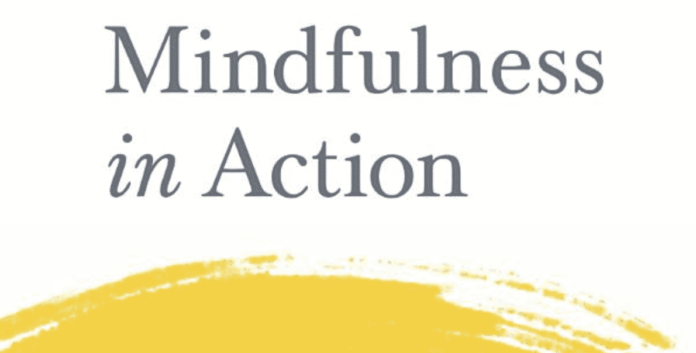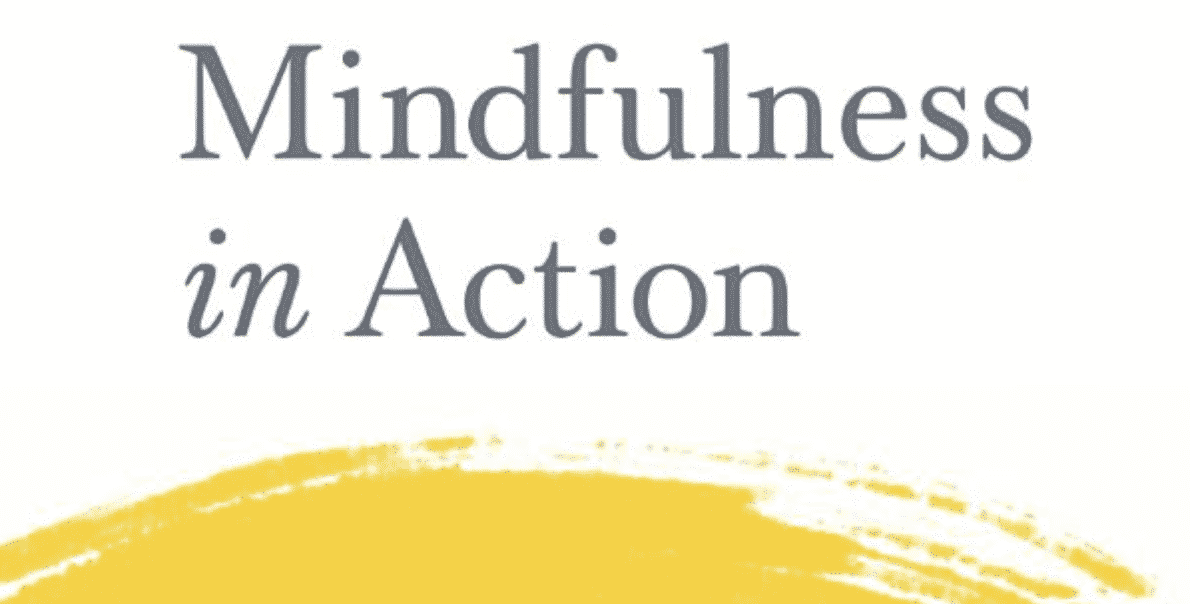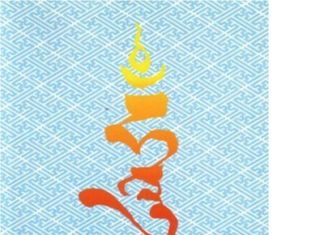

by Chögyam Trungpa
Edited by Carolyn Rose Gimian
Available from Shambhala Publications
This comprehensive collection of teachings by Chögyam Trungpa offers both new and experienced meditation students an extraordinary guide to mindfulness practice. The majority of these teachings were given by Trungpa Rinpoche in the early to mid-1970s, and have never been published before. They have been beautifully integrated by the editor, Carolyn Rose Gimian, with a freshness, immediacy and clarity that is truly amazing.
The progression, from the introduction to mindfulness practice to the final chapters on compassion and creating a mindful society, describes an inspiring and challenging journey. The voice of Trungpa Rinpoche is poignant and direct, communicating his deep appreciation for the human situation—for our foibles and aspirations, our intelligence and confusion, and our inherent potential for living fulfilling and meaningful lives.
In Carolyn Gimian’s preface and afterword, she makes it clear that her motivation was to create a book that can speak to all people who long to “make friends with themselves,” regardless of religious, cultural or spiritual orientation. The emphasis is on the experiences, challenges and discoveries that any practitioner might encounter who wholeheartedly undertakes this journey. The language is accessible and inclusive without being eclectic.
Mindfulness in Action is divided into three parts.
Part One: Making Friends With Yourself
This first section introduces the context, perspective, instructions and potential results associated with this approach to mindfulness meditation. The emphasis is on cultivating an intimate relationship with oneself, discovering and learning to appreciate our lives, including our capacities for creating neurosis and suffering, as well as discovering our natural wakefulness, bravery and gentleness.
Those of us who studied with Trungpa Rinpoche in the 1970’s will likely recognize many of the themes: cool boredom, aloneness, nowness, and compassion, to name a few. There are also unexpected and delightful teachings, such as in the chapter, The Teddy Bear of Breath, which compares mindfulness of the out-breath with a child’s love for her teddy bear or doll. Learning to love oneself without indulgence, egotism or the need for external confirmation is essential, and the basis for communicating and caring for others, as well. And daily mindfulness practice is the way to cultivate genuine self-care and openness.
Part Two: Foundations of Mindfulness
In Part Two, Chögyam Trungpa explores the meaning of the word “mind” from the perspective of his tradition and experience. This includes an existential examination of self, of “Who am I?” Who is the person practicing mindfulness? The first chapter in this section, First Thought, distinguishes between relating with the freshness of our mind’s confusion or insight, contrasted with the drama or complications generated by our subsequent discursive thoughts. He writes:
The only way to find out who we are is to just look. There you are. You might hate what you see or you might love it. So what? That’s it. That’s you. That’s good old you…What is that really about? It is about discovering this, this thing that is highly strung like a wild horse or a paranoid dog. This is in us; this is us. It is so tough and so seductive. It is sometimes extremely good and sometimes extremely wicked. We have this thing, we talk about this thing, and this thing that we are talking about is mind, obviously.
Rinpoche goes on to define mind as, “that which experiences the sense of separateness.”
Part Two looks at this confused perception of duality, and our entrapment in our personal histories and story-lines. It also points out how our fixations and sufferings are essential stepping-stones for developing mindfulness and awareness in daily life. According to Trungpa Rinpoche, confusion itself is the path rather than trying to get rid of confusion. He invites us to look very closely at how our minds function, to take nothing for granted, and to leave no mental stone unturned. “Continually looking closely and acknowledging exactly what is happening.” It’s discovering what motivates us, as well as to see what we are doing, clearly, without hesitation or judgment. “Exposing oneself to oneself without pretense and without patches is the real working ground and the genuine motive for practice.”
If the essence of Part One is making friends with our self, the core teaching in Part Two is to allow the myth of the self to fall apart without destroying that friendship. Appreciating life as it is “our bodies, hearts and minds exactly as they are” without bias or manipulation is the main point. That appreciation encourages us to relax our grip, to relate with fear and hesitation as part of our experience, rather than the dominant theme.
What I especially appreciated in this middle section of the book, was the editor’s skill at presenting Chögyam Trungpa’s teachings on the Four Foundations of Mindfulness in ordinary, everyday, non-religious language. She does this while maintaining the integrity and logic of this core Buddhist teaching. For example, in the chapter on Life Force, there is a penetrating description of the second foundation of mindfulness, mindfulness of life or livelihood.
When you meditate, you actually are meditating even when you think you’re not. You have no choice, in fact…There is still communication between your body and your mind…you are having a real experience of life, a real experience of reality, whether you like it or not. There is some magic…
In other words, as mindfulness practitioners we discover that connecting to ourselves is not something we need to create; it’s more a question of simply uncovering what is already taking place in our being, and relating to our confusion directly. It’s very encouraging to know that our bewilderment can be an ideal reminder to wake up. The more confusion we experience, the greater the number of opportunities to wake up. Rinpoche calls this experience, “spontaneous openness coming to us.”
Part Three: Mindfulness in Action
While part two looks at how mindfulness works, part three returns to looking at the meditation technique itself, with a deeper appreciation for how body, heart and mind function and can be synchronized. The essential teaching on “Touch and Go,” on how to fully recognize and acknowledge our experiences (touch) and then, how to cut our potential attachment to those raw experiences (go) is presented in detail. This is a handbook for working with emotions without being at their mercy, suppressing or ignoring them. We see it’s possible to free the energy and the wisdom of our emotions. Essentially, Part Three is about egolessness, and how that natural state of being can manifest, or be covered over by confusion.
In the chapter, Meditation and the Fourth Moment, Trungpa Rinpoche talks about the necessity to contact and reconcile the seeming paradoxes in life.
Experience cannot happen unless both black and white, sweet and sour, work together. Otherwise, you are just absorbed into the sweet, or you are absorbed into the sour, and there is no experience. You have no way of working with yourself at all.
By letting go of thoughts of the past, future and present, we discover the fourth moment. Thoughts of the past, present and future are essentially attempts at confirming or denying something or other.
The fourth moment, on the other hand, is a state of totality and total awareness that doesn’t need reassurance. It is happening. It is there. You feel the totality…The fourth moment is a much larger version of the present.
In order to understand how egolessness is our natural state of being, Trungpa Rinpoche describes the birth of ego, how our mistaken perception of duality comes into being. There is a “point-blank” quality to these teachings an uncompromising look at how mistaken we are about ourselves and life, and how it’s really time to grow up, to open up, and become genuinely helpful to ourselves and to our world.
Chögyam Trungpa points out that mindfulness in action is only possible if we have established a daily formal sitting practice, working through our resistance to waking up, and gradually, methodically unmasking our ego and its deceptiveness. This is expressed in the last chapter of the book, A Mindful Society.
When the practice of meditation has a footing in your life and becomes a regular practice, the contrast between sanity and neurosis in daily life becomes clear and precise. So working with both the formal practice of meditation and the post-meditation practice seems to be the only way to dismantle the fundamental core of ego’s game. One of the main things that I would like to encourage is our confidence that we can actually do this ourselves.
Mindfulness in Action was six years in the making. The editor painstakingly went through hundreds of transcripts, many typewritten or even handwritten, to find the material for this book. It is clearly a labor of love. I appreciated the Editor’s Afterword. In it, the reader can easily sense the profoundly positive impact that Chögyam Trungpa has had on Carolyn Gimian’s life and work. Her appreciation for and application of mindfulness in action is also apparent.
Alan Sloan began studying with Chogyam Trungpa in 1970 and has been a teacher within Trungpa Rinpoche’s tradition since 1976. He has presented many programs on mindfulness to diverse audiences in North America, Europe and New Zealand. He is an executive coach and facilitator in Halifax, Nova Scotia.
I believe that the voice that we hear throughout this book is actually a chorus of two: Chögyam Trungpa Rinpoche and Carolyn Rose Gimian—a literary marriage of real benefit. This is the most inspiring and practical handbook on mindfulness that I have encountered in 45 years of practice. I highly recommend it—for individuals new to mindfulness practice, for experienced meditators who wish to go deeper with their practice both on and off “the cushion,” and for mindfulness teachers who want to better understand, support and communicate with their meditation students.
















